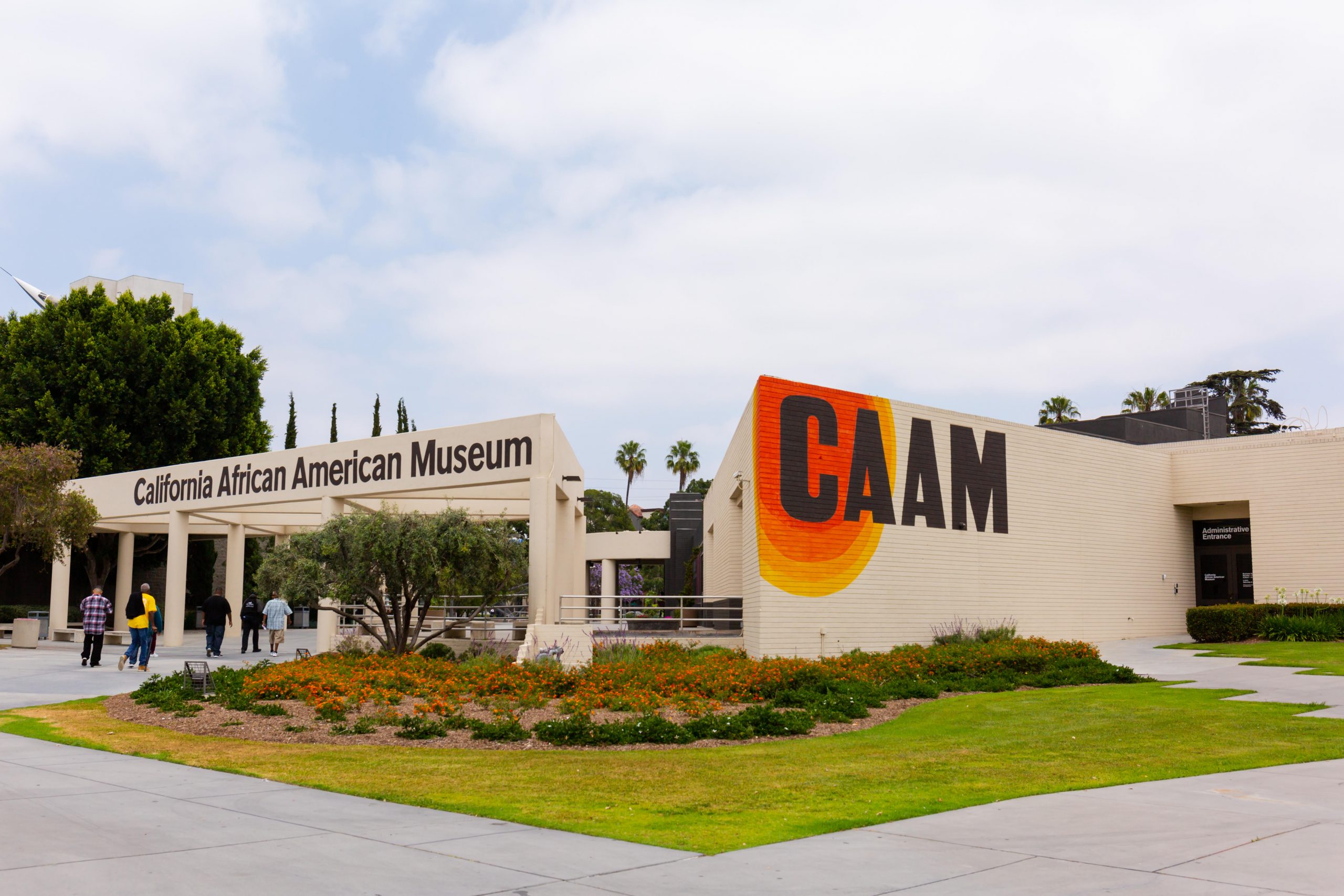Looking Forward
As assistant curator at the California African American Museum (CAAM), I have found that the pandemic has offered new opportunities to reach a larger audience through our virtual programming and exhibition videos. When the pandemic hit Los Angeles, we were in the midst of installing several exhibitions, and with things on hold, we were prompted to think creatively about how to make our work more accessible beyond the museum’s walls. Where before, exhibitions and programs were only available in real time, and on occasion recorded or archived on the museum website or YouTube page, we are now utilizing new technologies and regularly providing digital access to our amazing exhibitions, programs, and events. On Martin Luther King Jr. Day, CAAM hosted its first virtual MLK Day Celebration, with a musical welcome from the Inner City Youth Orchestra of Los Angeles (ICYOLA); a panel discussion moderated by the CAAM history curator, Susan D. Anderson, around King’s involvement with the labor movement, Black workers, and social justice; and a family story time and poetry workshop. Whether hosting a discussion around King’s work in Memphis or sharing recent acquisitions that appear in the exhibition Sanctuary, CAAM and its staff are keen to open the museum’s doors (virtually) to a wider audience.

A lot of the work done at CAAM is anchored in various social justice and equity subjects. An exhibition I co-curated, Making Mammy: A Caricature of Black Womanhood, 1840–1940, which was on view from September 2019 to March 2020, touched on one of the most pervasive stereotypes constructed during the post–Civil War era, and arguably the most enduring image from the days of Jim Crow: the mammy. This archetype of Black domestic servitude was often depicted as good-natured, overweight, and loud, and was critical to romanticizing the Antebellum South. Making Mammy uncovered the nuances behind this figure and illuminated the vestiges of enslavement in America through the mammy’s appearance in literature and cinema. Over the past year, with national unrest bringing forth a wave of reform around race and inequality, we are now seeing past injustices rectified in mainstream culture, such as the rebranding of Aunt Jemima products, Uncle Ben’s Cream of Wheat, and Mrs. Butterworth’s syrup.
Reflecting back on this year, we realized that the programs and exhibitions at the museum reinforce how important it is to lead the conversation in the community. CAAM has a long history of researching, collecting, preserving, and interpreting for the public enrichment the history, art, and culture of African Americans with an emphasis on California and the western United States. During my tenure at the museum, I have worked on exhibitions that explore the Black experience rooted in California history, positioning it within national and world history. The 2018 exhibition California Bound: Slavery on the New Frontier, 1848–1865 examined California’s underrecognized involvement with slavery in the nineteenth century, illuminating the state’s struggles over enslavement in an era that encompassed two wars and the establishment of California, first as a territory and then a state. Federal legislation sanctioned the capture of African Americans nationally through the Fugitive Slave Act of 1850, and California reinforced this legislation and extended it to the new frontier within the same decade. Being able to highlight underrepresented histories and show their larger impact is important, as it allows for inclusive, diverse dialogue across multiple topics. With the pandemic and other events of the year, it is necessary now more than ever to have these conversations around race and inequality and understand how they manifest in day-to-day life.
In shifting more content to a digital platform, the CAAM team is thinking creatively about how to engage in a digital way to share our content. Among the ways we are doing this is through our social media posts and the online presentations of our guest speakers. We are able to host a broader range of speakers in our virtual programming, where location has sometimes challenged availability. In March 2021, the program “I Am Woman: Promoting Self-Worth in Contemporary Black Art” featured artists Genevieve Gaignard, Deborah Roberts, and Grace Lynne Haynes sharing how their work explores imaging Black women and the shaping of racial and personal identity. Through social media, we have been posting more videos showcasing exhibitions on view or celebrating Black history. Adapting to include virtual programs and producing more social media content, we have expanded our audience and are able to share more information about CAAM and our mission.
The events of the past year will certainly shift how we process art and culture, and how institutions will proceed with exhibitions and scholarship. Since its inception, CAAM’s focus has been on Black history, art, and culture. The museum’s history reflects decades of groundbreaking exhibitions such as The Black Olympians 1904–1984, curated by CAAM’s first history curator, Lonnie Bunch, who became the founding director of the Smithsonian National Museum of African American History and Culture and is now secretary of the Smithsonian Institution. Another example is Face to Face (2017), curated by CAAM’s former deputy director and chief curator, Naima J. Keith, who is now the vice president of education and public programs at the Los Angeles County Museum of Art. Looking forward, the museum’s recently appointed executive director Cameron Shaw plans to focus on four themes for the museum in upcoming programming and exhibitions: Black abstraction, Black spirituality, liberating the Black archives, and environmental justice. Under the leadership of Shaw, who is already looking for opportunities to share the museum’s history in new and exciting ways, CAAM is poised to enter a progressive era.
Cite this article: Taylor Bythewood-Porter, “Looking Forward,” in “American Art History in the Time of Crises” Colloquium, Panorama: Journal of the Association of Historians of American Art 7, no. 1 (Spring 2021), https://doi.org/10.24926/24716839.11903.
PDF: Bythewood-Porter, Looking Forward
About the Author(s): Taylor Bythewood-Porter is Assistant Curator at the California African American Museum

